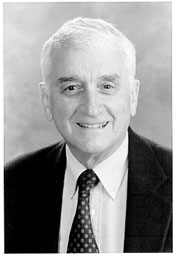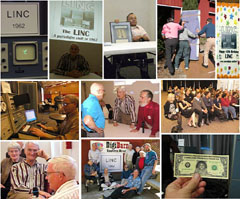 |
Tom Chaney
Wesley A. Clark
Jerome R. Cox
Gerald Johns
Event Host: Severo M. Ornstein
Maury L. Pepper
Scott Robinson
Event Introducer: Bruce Damer

I first became associated with the LINC in 1964 when I took Washington University's first hardware digital design class. The instructors were Wes Clark and Jerry Cox. The LINC was introduced as part of that course. The members of the class designed, built, and de-bugged the "4W2" (Four Week Wonder), a simple stand-alone personal computer. The I/O and tape storage for the 4W2 was a LINC. I joined the Computer Research Lab (CRL) directed by Wes Clark, in 1965. CRL was moving into a new project, the Macromodule project. LINCs were used as our personal computers during this effort. There were several LINC-to-Macromodule interface units built. A lot of the early metastablility test data I collected involved a mix of Macromodules to do the high speed collection and a LINC to analyze and store the results.
The LINC also served a personal role for me as a baby-setter. On weekends when I was at work, my son Scott, then about 6 years old, would sit in front of a LINC for hours, playing tic-tac-toe, drawing pictures with an "etch-a-sketch" program, etc. There were several games available on the LINC. In the early 1980's, as the LINCs were being phased out, Scott, then about 14, even had a LINC in his bedroom. (Tight fit). Scott now has a degree in Computer Engineering and heads a hardware design and development consulting company (STS Technologies) in St. Louis.
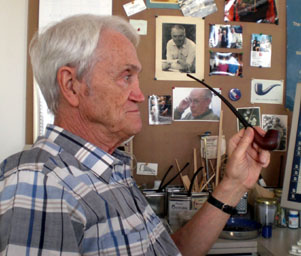
Wesley A. Clark, NtG,* was the principal architect of the TX-0, TX-2, and LINC computers at MIT. He led the Macromodular Systems Project at Washington University in St. Louis, and has long been a consultant to SUN Microsystems Laboratories. Inventor of the digital computer and the Ferris Wheel and author of the widely unacclaimed How I Built a Pergola in Silicon Valley and Found God, he is currently chairman of the department of semantics and casuistry at Clark, Rockoff & Associates in Brooklyn, New York.
* Not the General
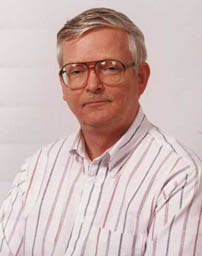
Gerald was working part time in a clinical/research Otolaryngology Department while still in high school. Almost everything was analog but there was the, rather awful, Computer of Average Transients, which was a primitive digital device. Transistors were in there! The lecture given by Jerry Cox in December 1963 at the Central Institute for the Deaf demonstrated that the LINC was clearly superior to anything else available to the biomedical research community at the time.
Gerald got a job with the LINC group while they were moving from Boston to St. Louis. Under the patient and motivating tutelage of Charlie Molnar, Gerald created many engineering and biomedical programs, and hardware designs which were used to further some computer development, teach medical students, and also to confuse bats. That one took a lot of hardware!
The opportunity to participate in the, at least partial, resusitation of a LINC has been just fun. Think of using a part of your brain that went dormant over 30 years ago!
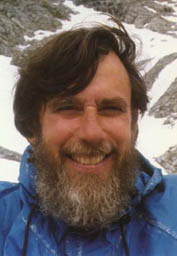
Severo Ornstein is a mid-sized maverick who came to computing in 1954 with the aid of a climbing rope. The full story is told in his book Computing In The Middle Ages which, among other things, is a paean to the LINC computer on which he cut his hardware design teeth. Later, he and another LINC pal had a heavy hand in devising Macromodules at Washington University, after which he deserted the ranks to join the team at BB&N in Boston which, somewhat to its surprise, was shortly awarded the contract to build the first part of the Arpanet (which eventually morphed into the Internet). That was a hard act to follow, but, after leading the first delegation of computer scientists to China in 1972, he escaped to Xerox PARC where - with the expert help of true professionals - he helped to build an early laser printer (the Dover) and an oversized personal computer (the Dorado). On the side he helped found Computer Professionals For Social Responsibility (CPSR) and designed the first screen-based music score editor (Mockingbird), whereupon Xerox management retired him to the hills where he designed and built a house. For the last twenty years or so he has focused on musical endeavors and has watched from the sidelines with bemused detachment as the computer field rumbles along without him.
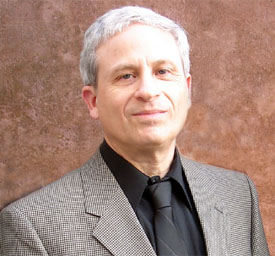
Maury was at Washington University's Computer Systems Lab from 1967 to 1974. He became the librarian for LAP6 and developed some of the modifications to LAP6. He was responsible for implementing some minor LINC hardware fixes, and he designed the logic for the SuperLINC - a Classic LINC which could access up to 32K of memory. He co-authored with Charles Molnar a library of floating-point routines. While at CSL, he was also involved in the development of Macromodules.
In 1975, he co-founded DRA Library Systems, a company specializing in libraries for the blind and physically handicapped. Later, he led a team which developed a system to monitor radiation treatments for patient safety. His activity on the MUMPS Development Committee led to the founding in 2002 of WorldVistA, a non-profit organization which has taken VistA, the hospital software developed by the VA, and make it available for doctors and hospitals worldwide. Currently, he is a computer consultant with his own company, M-Technology, and Chairman of WorldVistA.
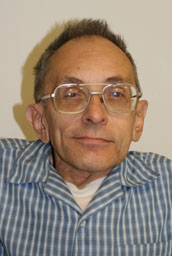
Scott Robinson joined the Computer Systems Laboratory of Washington University in 1967 as an engineering assistant at the age of 20. Over the course of many following years, he helped in extending the LINC's utility to an increasing range of applications, as well as in the assembly and modification of hardware for the Macromodular Systems project. When CSL's LINCs were finally decommissioned, he decided to buy several of them and keep them in his garage, where they remained for more than twenty years. After helping to bring one of these machines back to life, he is donating it to the Digibarn Computer Museum, and his remaining three machines to the Vintage Computer Festival collection.

Mary Allen Wilkes is an arbitrator and practicing attorney in Cambridge, Massachusetts.
In an earlier life she took up computer programming on a dare from her eighth-grade geography teacher and because her undergraduate philosophy degree had equipped her for precisely nothing at all. During its design phase she simulated the LINC on the TX-2 computer at MIT's Lincoln Laboratory. She also wrote many LINC operating systems, all called LAP something-or-other, until calling it quits with LAP6. She is the designer of the LINC console, the author of the "LAP6 Handbook" and co-author, with Wesley A. Clark, of "Programming the LINC." As part of the Macromodular Systems Project at Washington University in St. Louis, she designed the multiply macromodule - after which she traded in bits for writs and went to law school
Event Introducer: Bruce Damer
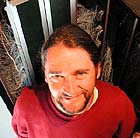
Bruce Damer is co-founder and Curator of the DigiBarn Computer Museum in the Santa Cruz Mountains of the Bay Area of Northern California. He has a passion for both the history of visual computing and a practice in the virtual worlds business as CEO of DigitalSpace Corporation and the author of the first book on Avatars and multi-player games on the Internet. Bruce will introduce the LINC panel and then pass it on to Severo to tell the story of the LINC and its restoration. The team is working hard to have a functional LINC for hands-on experiencing during the panel and VCF. More about Bruce here.
Please send site comments to our Webmaster.
Please see our notices about the content of this site and its usage.
(cc) 1998-
Digibarn Computer Museum, some rights reserved under this Creative Commons license.
